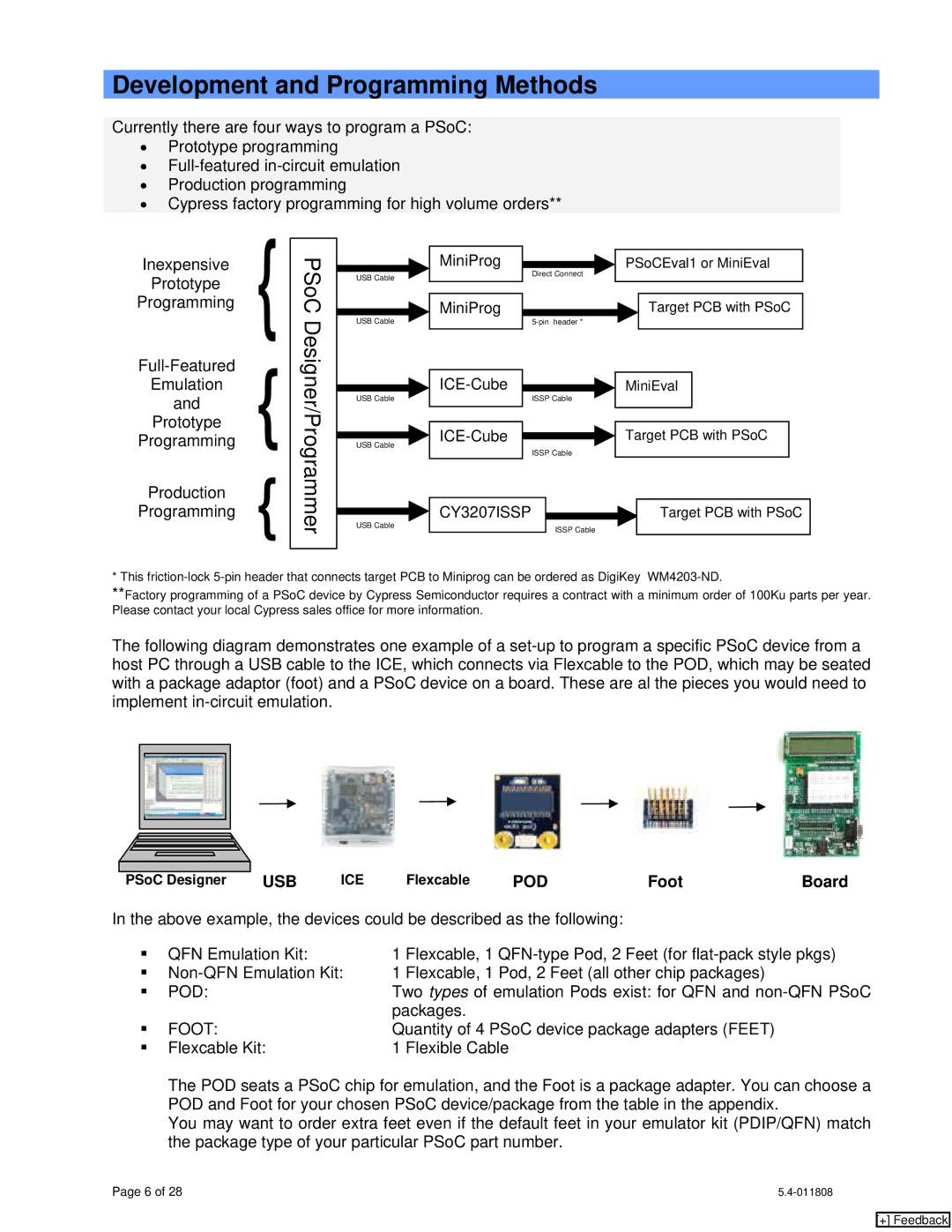
Development and Programming Methods
Currently there are four ways to program a PSoC:
•Prototype programming
•
•Production programming
•Cypress factory programming for high volume orders**
Inexpensive
Prototype
Programming
Emulation
and
Prototype
Programming
Production
Programming
PSoC Designer/Programmer
USB Cable
USB Cable
USB Cable
USB Cable
USB Cable
MiniProg
Direct Connect
MiniProg
ISSP Cable
ISSP Cable
CY3207ISSP
ISSP Cable
PSoCEval1 or MiniEval
Target PCB with PSoC
MiniEval
Target PCB with PSoC
Target PCB with PSoC
* This
**Factory programming of a PSoC device by Cypress Semiconductor requires a contract with a minimum order of 100Ku parts per year. Please contact your local Cypress sales office for more information.
The following diagram demonstrates one example of a
PSoC Designer
USB | ICE | Flexcable | POD | Foot | Board |
In the above example, the devices could be described as the following:
| QFN Emulation Kit: | 1 | Flexcable, 1 | |
| 1 | Flexcable, 1 | Pod, 2 Feet (all other chip packages) | |
| POD: | Two types of emulation Pods exist: for QFN and | ||
|
| packages. |
| |
| FOOT: | Quantity of 4 PSoC device package adapters (FEET) | ||
| Flexcable Kit: | 1 | Flexible Cable | |
The POD seats a PSoC chip for emulation, and the Foot is a package adapter. You can choose a POD and Foot for your chosen PSoC device/package from the table in the appendix.
You may want to order extra feet even if the default feet in your emulator kit (PDIP/QFN) match the package type of your particular PSoC part number.
Page 6 of 28 |
[+] Feedback
